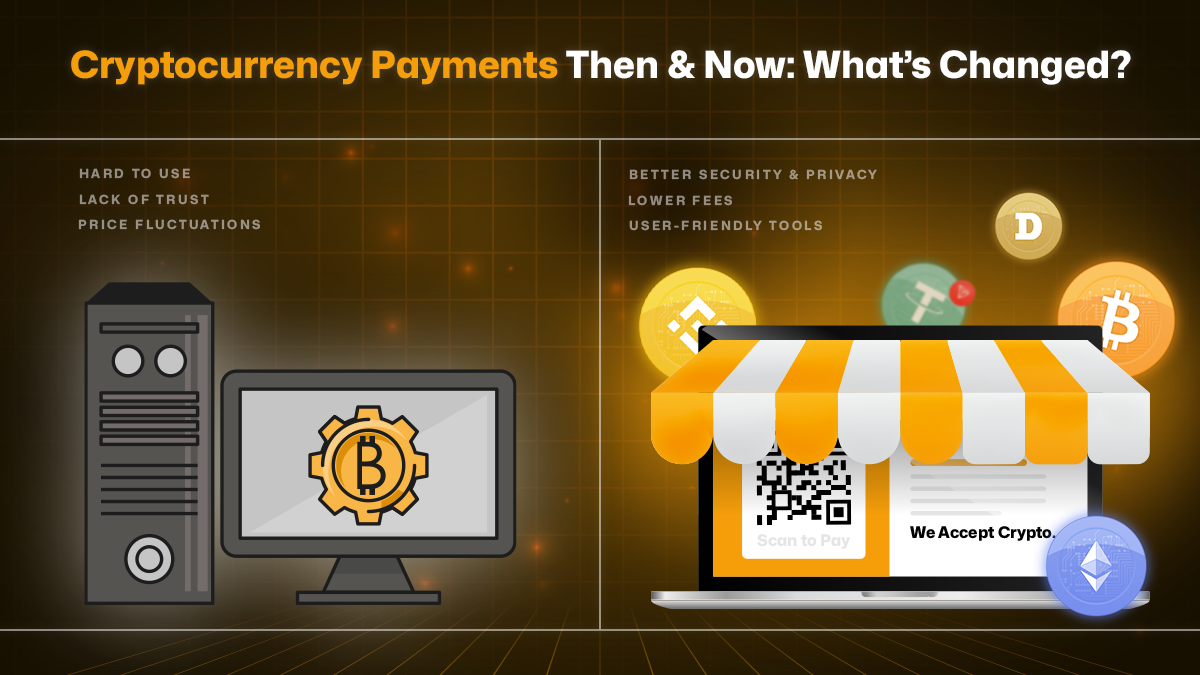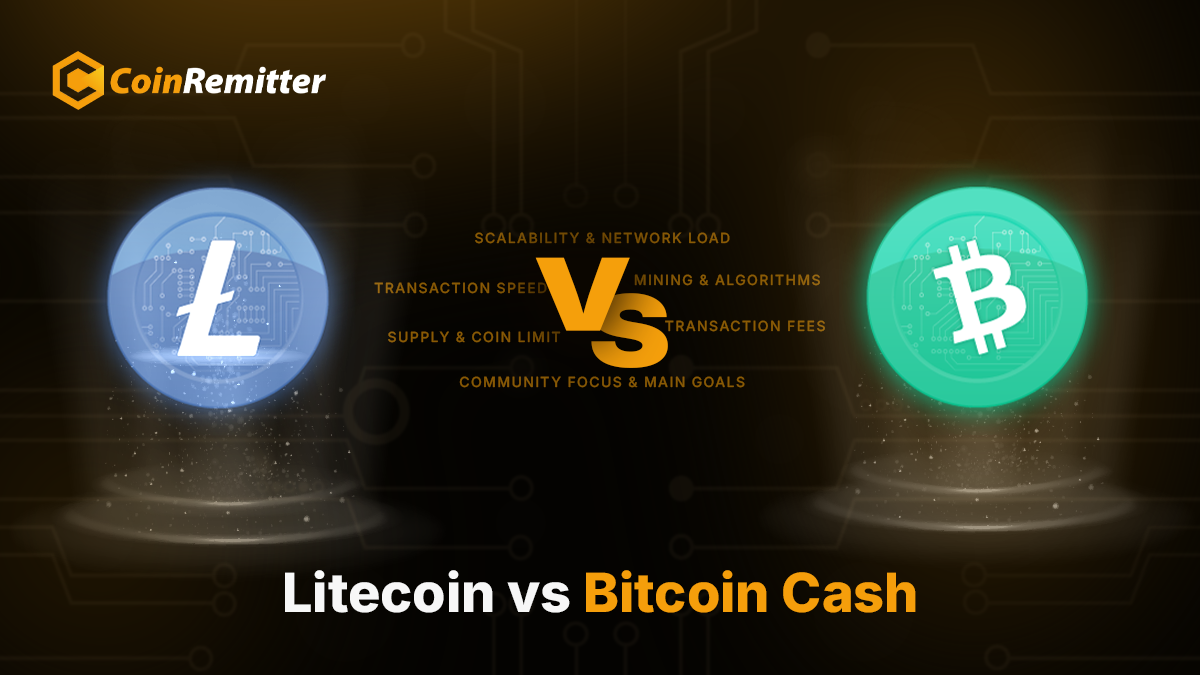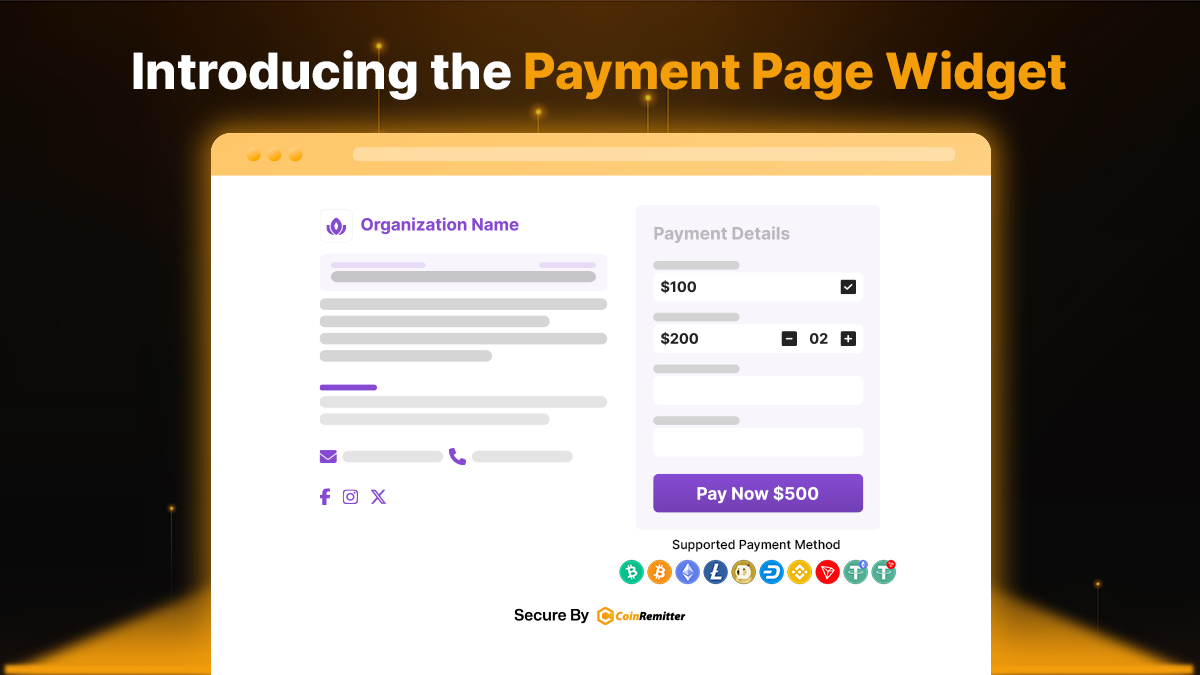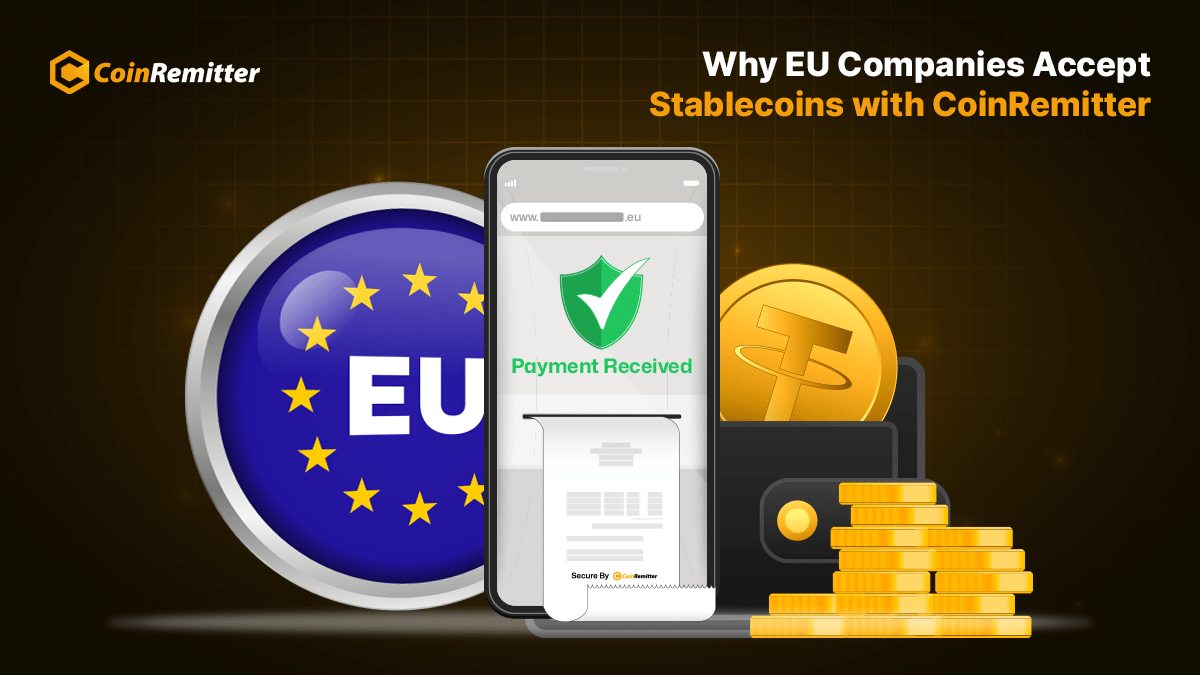Cryptocurrency Payments Then and Now: What’s Changed?

Cryptocurrency has changed a lot over the years. Initially, a countable number of users were using it. Most people were only familiar with Bitcoin and believed it was the only cryptocurrency. But now, individuals use various cryptocurrencies to send and receive funds. Businesses that accept payment in crypto consider them faster, safer, and easier than traditional payments. In this article, we will look at how cryptocurrency payments started and how they look today.
The Beginning of Crypto Payments
An anonymous developer created Bitcoin in 2009. The world knows him as Satoshi Nakamoto. Bitcoin wasn’t the first cryptocurrency ever created. However, it’s known as the first to be used in a real transaction. One of the first big moments for Bitcoin was in 2010. A man used 10,000 Bitcoins to pay for two pizzas.
In the early days, people thought that cryptocurrency payments were only for tech experts. Even after the first Bitcoin transaction, there was no crypto payment gateway or crypto wallet to process crypto payments. One had to copy and paste long codes to make a payment. Even a single mistake could result in a permanent loss of funds.
Early Challenges in Crypto Payments
In the early days, cryptocurrency payments had the following problems:
- Lack of Trust: Most people thought digital currencies were fake or risky.
- Hard to Use: There were no simple apps or websites. So, sending or receiving crypto was quite confusing.
- No Support: Banks and governments did not support crypto, and it was illegal in many countries.
- Price Fluctuations: Bitcoin and other cryptocurrencies experience rapid price fluctuations. This made payments hard to manage.
Slow and Steady Growth Over Time
Between 2011 and 2016, an increasing number of individuals began to show interest in cryptocurrency. New cryptocurrencies such as Litecoin and Ethereum were created. Therefore, individuals had more options. Some businesses started accepting Bitcoin payments. Most of them were online stores and tech experts.
But there were still many problems. Crypto was not user-friendly. Its price volatility was still a big concern. Additionally, there were many scams, and some exchanges were hacked. Still, some individuals believed in crypto. This belief helped some ventures develop new tools to facilitate easier crypto payments. That’s where the discussions regarding cryptocurrency payment gateways began to gain momentum.
Big Changes After 2017
The year 2017 was a turning point because of the increasing popularity of Bitcoin. It witnessed a sudden price surge (known as the Bitcoin Explosion), and people were continuously discussing it. Crypto payment processors also prioritized offering payment services in Bitcoin. Though they added other currencies, Bitcoin has always been their top priority.
After 2017, we witnessed many important changes:
- User-Friendly Tools: Cryptocurrency wallets became easier to use. Also, some cryptocurrency payment gateways began offering plugins for seamless crypto payment integration.
- More Cryptocurrencies: The world witnessed thousands of new coins, including stablecoins. Now, investors have a variety. Stablecoins emerged as a reliable option for those concerned about volatility.
- Better Security and Privacy: In 2019, we understood the importance of security and privacy and launched a crypto payment gateway without KYC. Business owners who wanted to accept crypto payments securely and anonymously joined us proactively.
- Crypto Awareness: Individuals have shown interest in cryptocurrency discussions and educated themselves. Those who considered cryptocurrency risky or fake changed their mind. They started considering it the next big thing in finance.
As a result, more online stores, restaurants, and even charities began to accept payment in crypto.
How Crypto Payments Work Today
Nowadays, crypto payments have become easier and more secure than before. Let’s understand what has changed:
Simple Crypto Payment Process
- Businesses that want to accept crypto payments have to register on a cryptocurrency payment gateway, create a crypto wallet, integrate payments into a website, and allow customers to pay in cryptocurrency. Features like Pricing Widget, Presale Widget, Payment Button, and Payment Page have made crypto payment integration relatively easy.
- Those who want to pay in cryptocurrency can directly deposit the amount into a merchant’s wallet through the checkout or invoice process.
Faster Transactions
New cryptocurrencies, such as Tron, have introduced speedy transactions. Similarly, an increased number of miners helps confirm transactions more quickly, resulting in faster transaction processing.
Lower Fees
Because of L2 solutions, competition, and the variety of coins, platforms offer competitive fees. For example, our crypto payment processor charges only 0.23% for crypto processing, which is the lowest fee available.
Increased Use of Stablecoins
One big change in the cryptocurrency world is the increased frequency of people using stablecoins. These coins maintain their value stability because they’re tied to assets like the US Dollar. That means you can use them for payments without worrying about sudden price changes.
More Acceptance
Many reputable businesses now accept crypto payments. You can buy goods, book hotels, ask for services, donate to charities, or even pay for services using Bitcoin, Ethereum, or stablecoins. Cryptocurrencies have spread across various industries.
Conclusion
Cryptocurrency payments were initially challenging. Only a few people used them because the tools were not easy to use. Now, they have changed completely. Many individuals use them regularly. On the other hand, many businesses accept crypto payments to stay competitive. Cryptocurrency payments have grown significantly and continue to improve daily.
Over 38,000 merchants are using CoinRemitter
Join them now



